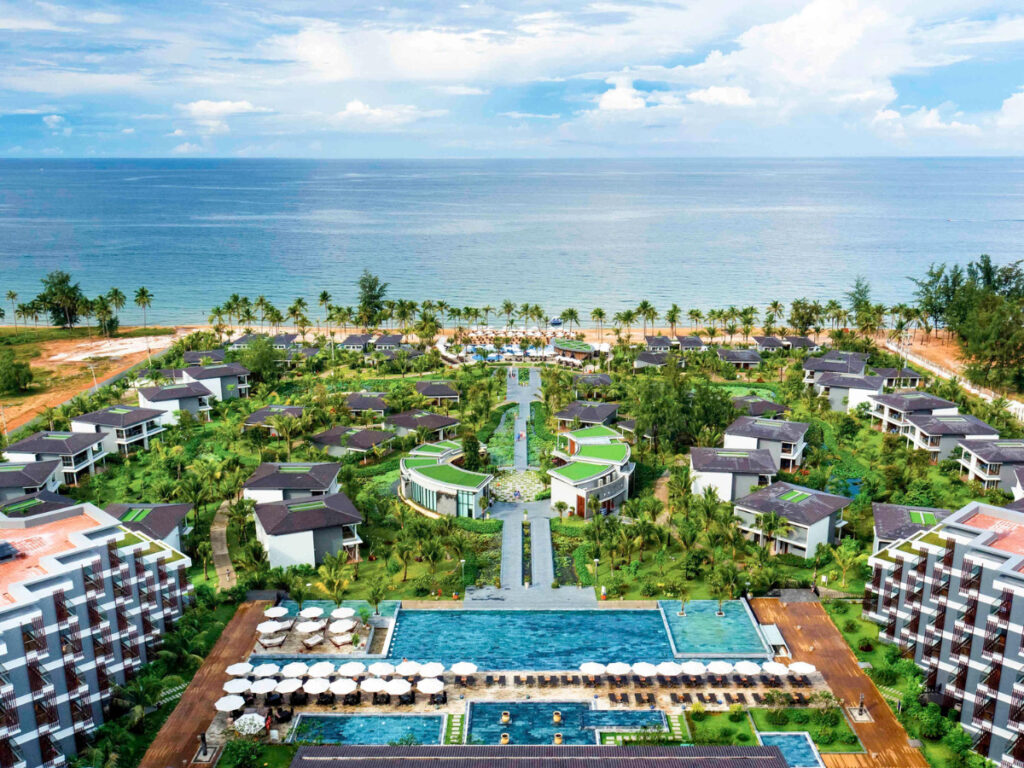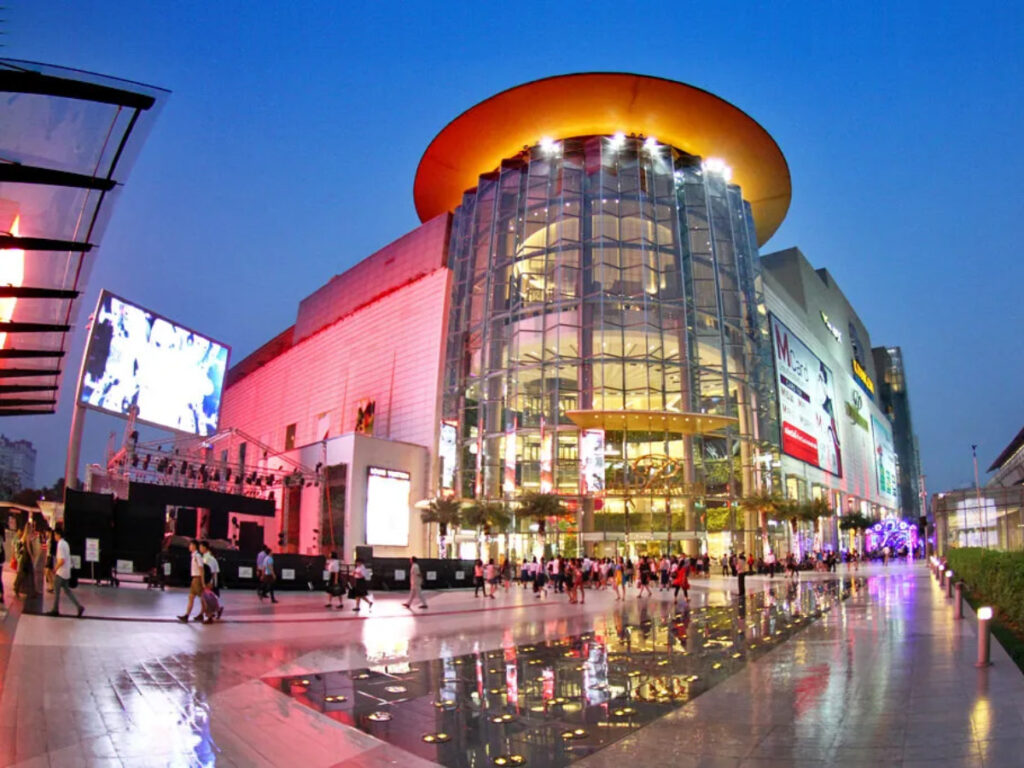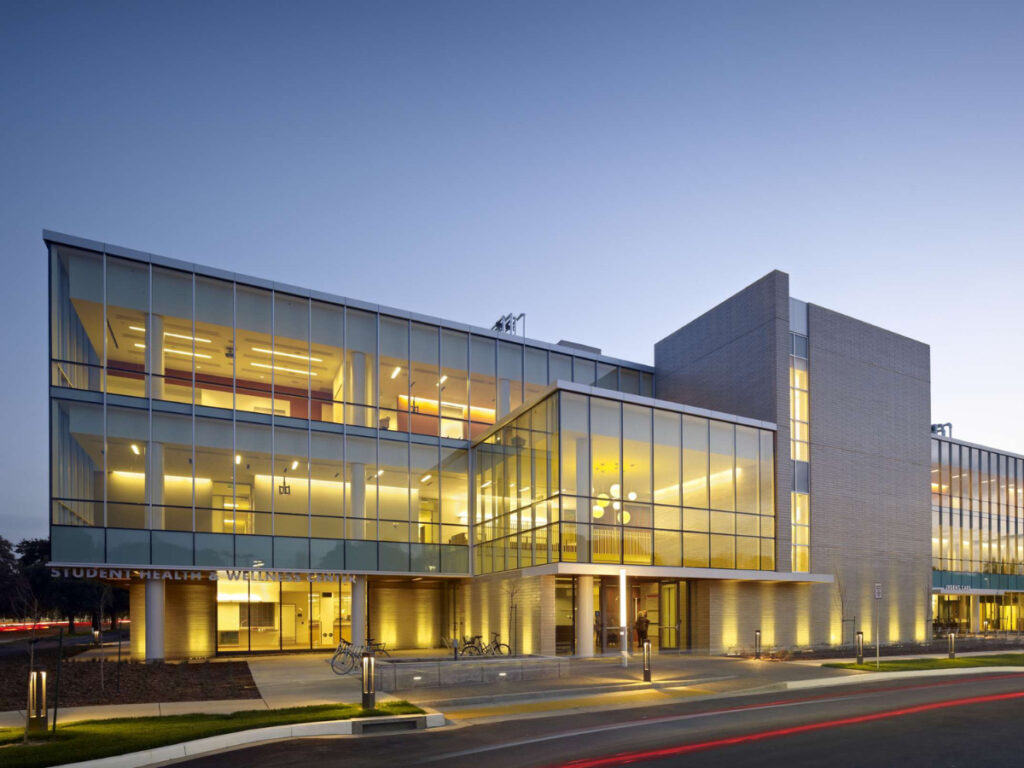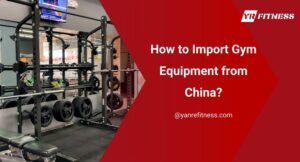With the fitness industry booming in 2025, selecting the right spot for a new establishment is critical. This article delves into the best locations to open a gym this year.
This list is meticulously crafted after analyzing market trends, population demographics, and accessibility. We’ve assessed areas with growing interest in health and fitness, ensuring that investment will thrive. Recent years have witnessed an uptick in gym memberships and a growing interest in physical health, a positive sign for those pondering what do you need to open a gym.
The success of a gym largely depends on its location. Here’s the best places to establish a gym for optimal success:
- Urban Locations
- Suburban Sweet Spots
- Residential Areas
- Commercial Complexes and Business Districts
- Tourist Areas and Resorts
- College and University Proximities
- Shopping Malls and Complexes
- Close to Health and Wellness Centers
The journey to finding the perfect spot for your gym starts here. Keep reading to discover these promising locations and why they stand out in 2025.
Table of Contents
- 1. Urban Locations
- 2. Suburban Sweet Spots
- 3. Residential Areas
- 4. Commercial Complexes and Business Districts
- 5. Tourist Areas and Resorts
- 6. College and University Proximities
- 7. Shopping Malls and Complexes
- 8. Close to Health and Wellness Centers
- 5 Factors to Consider When Choosing a Location for the Gym
- Conclusion
1. Urban Locations
Urban areas, characterized by their dense population and bustling activity, offer a dynamic setting for a gym. The sheer number of people living and working in these regions presents a massive potential customer base, making them an attractive option for gym establishments. Furthermore, urbanites often seek convenient fitness solutions due to their fast-paced lives. Here’s a detailed discussion about this spot:

Accessibility
Nestled within the heart of bustling cities, these locations are usually within walking distance for many office workers and city dwellers. Public transportation is often abundant in such areas, allowing potential gym members to easily commute to and from the fitness center. Busy streets and pedestrian pathways further increase the visibility and accessibility of the gym, which can be a key driver for foot traffic.
Demographics
Urban areas are often densely populated with a wide variety of individuals. Many of these residents and workers are young professionals who have a growing interest in health and fitness. Furthermore, the high-paced lifestyle of city dwellers often creates a demand for fitness centers that can offer quick, efficient workouts.
High-income earners residing in urban areas are also more likely to invest in premium gym memberships and personal training sessions.
Competition
The density of urban areas often means a higher concentration of gyms and fitness centers. It’s imperative to research the specific services, classes, and amenities offered by competitors in the vicinity. While some might view competition as a challenge, it’s also an opportunity to find a unique selling proposition that stands out.
Cost
While urban locations boast numerous advantages, they come with a price. The cost of leasing or purchasing property in city centers is typically higher than in other areas. However, the increased membership fees and potential for a high volume of customers can often offset these higher expenses. It’s essential to weigh the benefits against the financial commitment required.
2. Suburban Sweet Spots
Suburban neighborhoods, sitting right at the junction of city life and tranquil living, have their unique charm and challenges. With families and professionals settling in such areas for a balanced lifestyle, there is an evident demand for fitness centers that cater to both adults and children.
These locales often have space and infrastructure conducive for larger gym facilities. Here are the key aspects that make suburban locations particularly appealing for gym establishments:

Accessibility
Suburbs are often well-connected to major roads, providing easy access for those traveling by car. Many suburban areas also offer ample parking spaces, which is a significant advantage for members who drive. However, public transport might be less frequent compared to urban settings. It’s therefore vital to ensure that the chosen suburban location is reasonably accessible for the majority of potential members.
Demographics
Suburban populations usually consist of families, middle-aged individuals, and older adults. Fitness interests in these areas might lean towards family-friendly programs, group classes catering to specific age groups, or wellness initiatives. It’s also worth noting that suburban residents may have slightly different working hours compared to urban professionals, which could affect peak gym hours.
Competition
Suburbs can have fewer gyms than urban areas, providing an opportunity for newcomers to make a mark. Still, it’s essential to research the existing gyms in the chosen location. For instance, a suburb may lack specialized fitness centers, such as yoga studios or Functional Training gyms, presenting an untapped market.
Cost
Suburban locations generally have lower property costs than urban areas. However, they might require larger spaces to accommodate amenities like swimming pools, tennis courts, or kid-friendly zones. Consider investing in YR Fitness equipment, a brand with the finesse of a jewelry manufacturer, ensuring value for money and longevity in the gym setup. Again, it’s a matter of balancing potential revenue against the costs involved.
3. Residential Areas
Tucked away from the commercial hustle and bustle, residential zones offer a homely appeal. Setting up a gym in such locales can mean becoming an essential part of the community. Residents appreciate the ease of having a fitness center a short walk away, fostering consistent gym routines and community bonding. Here’ alook if its key areas:

Accessibility
Residential areas, particularly gated communities or large apartment complexes, offer immediate proximity to potential gym members. Most residents can simply walk to the fitness center, making it highly convenient. However, it’s crucial to ensure that the gym is located centrally within the residential zone to maximize accessibility for all residents.
Demographics
Residents in these areas are a mix of families, young professionals, and older adults. A gym in such a setting can benefit from offering a diverse range of programs catering to all age groups. An understanding of the specific community’s demographic can lead to tailored fitness programs that resonate with residents.
Competition
Competition within residential areas can be minimal, especially if there are no existing fitness centers within the community. This scenario presents an excellent opportunity for gym owners to establish a strong brand presence. However, it’s always a good practice to check for nearby gyms just outside the residential zone.
Cost
The cost of setting up a gym in a residential area can vary. If the gym is part of a community amenity, the property costs might be reduced or included in community maintenance fees. On the other hand, establishing an independent gym within a residential area might incur standard leasing or purchasing costs.
4. Commercial Complexes and Business Districts
Business districts are teeming with professionals who are constantly on the move. Amidst their hectic schedules, many seek fitness centers within or near their workplace for convenience. Establishing a gym in such areas can attract those looking to squeeze in a workout before heading to the office or right after wrapping up their day. Factors that contribute to its appeal, such as:

Accessibility
Commercial complexes and business districts are strategically located to be easily accessible. These areas often lie at the intersection of major roads, making them straightforward to reach by car. Additionally, due to the business-oriented nature of these zones, they are usually well-served by public transportation, facilitating easy commute for workers and visitors alike.
Demographics
Given the nature of commercial hubs, the primary demographic consists of working professionals, many of whom might be keen on squeezing in a workout during their lunch break or before heading home. Catering to this demographic could mean offering shorter, high-intensity sessions or flexible membership plans.
Competition
In such bustling areas, the presence of multiple fitness centers is likely. However, the dense population of office workers creates a large pool of potential clients, making the competition manageable. It’s essential to differentiate the offerings, perhaps by introducing innovative training regimes or state-of-the-art equipment.
Introducing top-quality equipment from YR Fitness, known for its excellence in the jewelry manufacturing industry, can also be a distinctive edge in the competitive landscape.
Cost
Being prime real estate, properties in commercial complexes can be on the higher side of the cost spectrum. However, the potential for attracting a large number of premium memberships, given the demographic, might justify the investment. Regular footfall and higher membership rates can provide a steady revenue stream, offsetting the initial expenses over time.
5. Tourist Areas and Resorts
Vacation spots attract a diverse crowd, all looking to relax and rejuvenate. However, many modern travelers also wish to maintain their fitness routines even while on holiday. Setting up a gym in tourist areas or resorts can cater to these fitness-conscious visitors, ensuring they don’t miss out on their workouts while enjoying their vacation. The appeal of these locations is enhanced by:

Accessibility
These areas are tourism magnets, drawing visitors both locally and internationally. By default, they ensure top-notch connectivity, be it by road or direct transport services for tourists. Accessibility is their USP, ensuring that tourists can reach their destinations without hassles. For a gym, this translates to easy visibility and approachability.
Demographics
A diverse group visits tourist areas: families, solo travelers, groups, and even corporate teams on off-sites. While their primary goal is relaxation or sightseeing, many don’t want to break away from their fitness routines. A fitness center in such areas can cater to this health-conscious segment, providing them with the facilities they seek.
Competition
Interestingly, tourist areas might not be as saturated with gyms as one would expect. While hotels and resorts may offer in-house fitness rooms, independent state-of-the-art gyms might be sparse. This gap in the market can be capitalized upon, especially by offering niche services. Think of mountain yoga sessions or beachside pilates — unique offerings that leverage the location while ensuring fitness.
Cost
Acquiring property in a prime tourist area might be a significant investment, given the high demand. But, with a higher price tag comes the potential for premium services. If a gym can create a compelling brand that resonates with the upscale tourist clientele, the returns can be substantial. Exclusive packages, limited-time memberships, or collaborations with local hotels and resorts can further drive profitability.
6. College and University Proximities
Higher education areas are hubs of young energy and enthusiasm. Students, staff, and faculty members can all be potential gym-goers. By situating a gym close to colleges or universities, one can tap into this youthful demographic, offering them facilities to channel their energy positively. Here’s a closer look:

Accessibility
These zones are buzzing hubs of youth and energy. According to an article in GLOFOX, teenagers mostly want to live an active lifestyle, better their wellness and do something productive to take them away from their study periods. For a gym, this means a steady influx of potential members.
Educational institutions ensure that students have good transport connectivity. Be it buses, trains, or dedicated college transport services, getting to and from these areas is relatively straightforward.
Demographics
Young adults dominate this space. Energetic, health-conscious, and always on the lookout for the next trend, students are an ideal demographic for fitness centers. But it’s not just about traditional workouts; there’s potential for introducing new fitness fads, classes, or equipment that resonates with this age group.
Competition
While on-campus gyms or fitness rooms are commonplace, they might not cater to all the students’ needs. Herein lies an opportunity. Offering specialized classes, group discounts, or even academic break packages can lure students in. An alliance with local eateries or cafes for post-workout deals could be the cherry on top.
Cost
While spaces near educational institutions might come at a moderate cost, the real challenge is setting the right pricing model. Students, often on a tight budget, seek value for money. Offering competitive rates, student discounts, or even part-time job opportunities within the gym can be attractive propositions.
7. Shopping Malls and Complexes
Malls aren’t just for shopping anymore. They have transformed into multi-purpose spaces, providing entertainment, dining, and other services. A gym in such a setting can attract those who wish to combine their shopping trips with fitness sessions, making the most of their outing. Let’s have a depth exploration of these locations:

Accessibility
Shopping malls and complexes are designed with the purpose of accommodating large crowds. They are strategically located, often close to major roads and transportation hubs, making them easily accessible for individuals. Their vast parking areas ensure that those driving have little to no hassle in parking, while the proximity to public transportation ensures that even those without personal vehicles can easily get to them.
Demographics
These locations attract a diverse crowd, spanning various age groups and backgrounds. Families, young adults, and older individuals frequently visit malls not just for shopping, but also for entertainment, dining, and other activities. With fitness consciousness on the rise, many visitors could be potential gym members, especially if they can fit in a quick workout session during their mall visits.
Competition
Given the all-in-one nature of malls, it’s likely to find other fitness centers or gyms in the vicinity. But malls, with their expansive size, can accommodate more than one fitness center, especially if each targets a different niche. Researching the types of gyms already present and their offerings can be insightful. Differentiating by focusing on unique fitness programs or state-of-the-art equipment has worked in such settings.
Cost
While the footfall in malls is high, so is the cost of leasing. Malls typically charge a premium for spaces, given the visibility and customer access they offer. This cost can be offset by the potential to attract a large number of members, but it’s essential to consider other expenses like utilities, maintenance, and shared mall costs.
8. Close to Health and Wellness Centers
Health and wellness centers focus on holistic well-being, from medical check-ups to therapeutic services. Having a gym nearby complements this ethos of health and can be beneficial. Individuals visiting these centers might be advised or inclined to incorporate regular workouts into their health regimen. Here’s how it can be:

Accessibility
Areas near health and wellness centers are usually well-connected, given that patients and visitors need to access these centers with ease. The proximity to main roads, as well as public transport facilities, ensures a steady flow of individuals, providing potential gym members.
Demographics
People visiting health and wellness centers are already conscious of their health, making them potential gym goers. This includes individuals going for regular check-ups, therapy sessions, or even those visiting wellness centers for spa and relaxation services. Targeting this group, who are already invested in maintaining or improving their health, can be a strategic move.
Competition
While fitness is a different domain from health and wellness, there might be overlaps in services. Some wellness centers might offer light fitness programs or yoga sessions. Hence, understanding the landscape is essential. If a wellness center focuses on therapies and massages, a gym with heavy-duty workout equipment fills a gap in the market.
Cost
Properties around health and wellness hubs can be on the pricier side, given their prime location and the kind of visitors they attract. However, if one can tap into the potential customer base, the higher costs might be justifiable. Collaborating with these centers, for example, offering discounted gym memberships to their regular visitors, can be a smart way to maximize returns.
5 Factors to Consider When Choosing a Location for the Gym
The fitness industry has witnessed a significant surge in recent years, with gyms becoming a pivotal component of urban lifestyle. According to Custom Market Insights, the global gym and health club market size is expected to hit around USD 125.23 Billion by 2030, emphasizing its vast potential for new entrants.
Choosing an optimal location for a gym can make the difference between a thriving fitness hub and an overlooked establishment. Here are four factors to consider when choosing a location for a gym:
#1 Visibility and Foot Traffic
Gyms that are visible from main roads or popular areas naturally attract more attention. A location in a busy shopping complex or near office buildings, for example, can receive spontaneous visits from people curious about the establishment. Furthermore, consistent foot traffic from nearby businesses or amenities can lead to increased inquiries and potential memberships.
The table illustrates how the level of visibility impacts the potential foot traffic for gyms, with high visibility locations being the most advantageous in terms of spontaneous visits and inquiries.
Visibility Level | Foot Traffic Potential | Description |
High | Very High | Gyms located in busy shopping complexes, near office buildings, or along main roads. These gyms benefit from spontaneous visits and consistent foot traffic, resulting in increased inquiries and potential memberships. |
Moderate | Moderate to High | Gyms situated in areas with decent visibility, such as neighborhoods with local businesses or recreational facilities. While not as prominent as high-visibility locations, they still attract a steady flow of potential customers. |
Low | Low to Moderate | Gyms in less visible areas, like residential neighborhoods or industrial zones. These gyms may rely more on marketing efforts to generate foot traffic, as they receive fewer spontaneous visits. |
Very Low | Very Low | Gyms with minimal visibility, tucked away in obscure locations with little to no passing foot traffic. These gyms face significant challenges in attracting potential members solely based on location and visibility. |
#2 Size and Layout of the Premises
The size of the premises dictates the range and quality of services offered. Spacious areas can accommodate diverse equipment, specialized workout zones, and other amenities such as saunas or pools. The layout also plays a significant role; a well-designed gym facilitates smooth movement, proper equipment spacing, and a comfortable environment for workouts.
For instance, a friend recently remarked on the importance of a spacious, well-laid-out gym after visiting a facility where machines were so closely packed it hampered movement.
#3 Lease Terms and Costs
Lastly, understanding lease terms and costs is vital. Some locations might offer attractive lease terms, making them economically viable in the long run. It’s essential to ensure that the monthly rent or lease doesn’t erode the profitability of the gym. Also, understanding any restrictions or regulations related to the premises can prevent future challenges.
#4 Potential for Future Growth and Expansion
As a gym grows in membership, there might be a need for expansion or addition of more facilities. Choosing a location where there’s potential for growth, whether by renting an adjacent space or through scalable infrastructure, ensures that the gym can evolve without the need to relocate. This also prevents disruptions to loyal members who have grown accustomed to the gym’s current location.
#5 Safety and Neighborhood Reputation
Potential members prioritize their well-being, not just inside the gym but also when they’re coming to or leaving the facility. A neighborhood with a good reputation is more likely to attract individuals who value their security, especially during late hours. Regions with well-lit streets, visible security measures, and a generally safe ambiance can significantly bolster the appeal of a gym.
Conclusion
Selecting the right spot for a gym in 2025 hinges not just on location but also on understanding the unique needs of the community around it. As business owners consider these prime locations, it’s essential to pair the right space with the right equipment. Enter YR Fitness, a trusted name that understands the diverse requirements of a fitness establishment.
For those business magnates keen on ensuring their gym not only attracts but retains members, choosing top-tier equipment is paramount. Don’t hesitate to contact us for product details or any lingering questions. Let’s collaboratively pave the way to fitness success.
Related articles:






